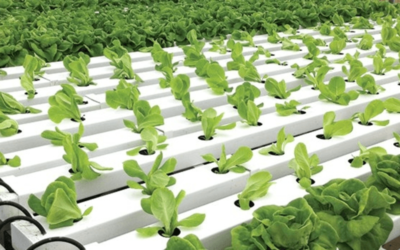What image do the words ‘green home’ conjure up for you? Do you see a home with solar panels on the roof and large rainwater harvesting tank in the garden? Or perhaps you think of a home filled with natural materials and energy-saving technology? Both of these answers would be correct—but there’s something you’re missing.
It’s not known benefits that gets top billing when you hear about green homes. The focus is usually put on how much money you can save on heating and running your home. After that it’s the fact the homes built using eco-friendly materials are kinder to the environment. Yes, not only do green homes save you money and use natural resources more efficiently, they’re also much healthier for the people who live in them. Let’s examine how that works.
It’s all about the indoor air quality
Just think about how much time you spend indoors. Whether it’s at home, at school, in the office or in your car, you probably spend about 90% of your day inside. You may not live in an area with a significant pollution problem, there’s no guarantee that the air you breathe is clean.
Some of the more common indoor air pollutants include:
- Dust
- Mould
- Fungi
- Pollen
- Pet dander (the minute scales from hair, feathers and skin)
- Dust mites and insects
- Bacteria and viruses
All of these contribute to poor indoor air quality and may affect the health of the people living in the home. The result of breathing this polluted air is an increase in infectious illnesses and allergies. It may also be the cause of respiratory illnesses or exacerbate existing conditions such as asthma.
Unfortunately, these biological organisms are impossible to avoid. They are constantly circulating through the air and practically invisible to the naked eye. So what are the features of a green home that result in a better indoor air quality?
Green homes are correctly insulated
While you may imagine that installing air filters is the only way to clean the air inside your home, this isn’t really a good idea. Filters will trap some of the pollutants, but they need to be cleaned regularly. If they aren’t, the problem can get worse.
A better idea is to make sure your home is properly insulated. Traditional homes, particularly in our moderate climate, don’t bother with insulation. After all it’s normal to have windows open to allow the fresh, cool air in during the summer months. But when the winter comes, dust and other pollutants sneak in through the gaps in windows and under doors. It also makes our homes chilly and this can weaken the immune system which increases your chances of catching the latest cold or flu virus doing the rounds.
Green homes, on the other hand, are very well insulated. Including ceiling, floor and wall insulation. Not only does this help keep the temperature even all year round, it also improves the indoor air quality.
Green homes use radiant heating and cooling
Aside from causing your electricity bill to increase during winter, using a blow heater can also decrease the quality of your air. Heaters tend to gather dust during the summer when they’re not in use. So when you first switch them on they release more pollutants into the air. And they continue to blow the pollutants around as you use them during the winter.
Green homes are heated differently. They make use of radiant heat to provide a comfortable indoor temperature during the winter months. For example Hydronics Radiant heating and cooling systems. It’s simply a network of pipes laid over the insulated floor of the home. Warm or cold water is pumped through the pipes to maintain the temperature according to your preference.
Not only does this system use very little electricity and water, it’s also extremely effective at keeping your home at a comfortable temperature all year round. And because it doesn’t produce the same kind of humidity as conventional heating systems do, it minimises the growth of mould and fungi. These organisms require damp and humid conditions to thrive, which radiant heating simply doesn’t create.
Green homes are virtually free of toxins
Although you may not even notice the toxins in traditional homes—they are there. These are referred to as VOCs or Volatile Organic Compounds. Essentially they are carbon-based chemicals that evaporate at room temperature. Most of them have no odour, so you’re not aware that you’re breathing them in. However, inhaling even low levels of these chemicals can increase your risk of developing some serious health problems. They include substances such as: acetone, benzene, formaldehyde and xylene.
The source of these chemicals are found in the building materials used to construct traditional homes, for example:
- Carpets and adhesives
- Paints
- Solvents
- Varnishes
- Vinyl floors
- Air fresheners
- Cleaning materials
They are virtually everywhere and very difficult to avoid. Unless your home is well ventilated you’re likely to have a higher concentration of these toxins indoors. And considering that’s where you spend most of your time, it’s something that needs to be taken seriously.
It’s also why green buildings use more natural building materials and finishes. These toxins are just as harmful to the environment and a home cannot be considered green if it doesn’t cause minimal impact to the environment. Think of the smell you notice when a new carpet has been laid—that’s actually formaldehyde you smell, and it’s not a good thing.
What would be better and safer for your home is bamboo flooring. Not only is it durable and sustainable, it’s virtually VOC free. It creates a contemporary look in the home and can also be used for countertops and furniture. Paints and varnishes low in VOCs are also used to ensure the air quality within a green home remains as pure as possible.
Something that you can start doing now to reduce the VOCs in your home is to take a closer look at the materials you use to keep your home clean. Many disinfectants also contain these chemicals but there are natural alternatives available. Simple, natural substances such as baking soda, white vinegar and even corn starch can be just as effective at keeping your home clean as your regular products. And you’ll end up saving some money on your monthly cleaning bill too.
Green homes are well ventilated
You may think that maintaining a good indoor air quality means keeping your windows and door shut, but the opposite is true. While green homes are well insulated, and this helps to keep out dust and other pollutants, it’s just as important to make sure that fresh air circulates through your home.
A green home is one that recognises that and includes features that allow for the proper movement of air through its spaces. This actually helps to remove stale, polluted air out of the home and replaces it with cleaner, fresher air from outside. Pollutants will only build up if they have nowhere to go. This is particularly true in bathrooms where the added moisture and warmth provide the ideal breeding ground for organisms such as mould and mildew.
But just opening your windows may not be enough. That’s why green home include some form of mechanical ventilation. A balanced ventilation system that uses an exhaust fan to pull stale air from the house while a supply fan furnishes the fresh air required is the best way to ventilate a well-insulated home.
The benefits of good indoor air quality
So aside from eliminating potentially harmful pollutants from the air inside your home, what other benefits can you expect from a green home?
Better sleep
This may surprise you but because your breathing becomes deeper and steadier as you sleep, good air quality becomes essential for a proper nights rest. Respiratory irritations can make breathing as you sleep difficult and may contribute to conditions such as sleep apnea.
Clean indoor air means you’ll sleep soundly at night and wake up refreshed.
A Fresher smelling home
A well-ventilated home just smells better. Odours are quickly removed and don’t settle into soft furnishings and fabrics. Mould and mildew don’t get a chance to multiply and spread so there’s no damp, musty smell to worry about. And when your home smells clean and fresh you immediately feel better.
Balanced humidity
With a home that’s correctly ventilated and heated you’ll achieve balanced humidity. That means it’s not so humid that biological organisms have a chance to grow, but not so cold and dry that your sinuses suffer. Breathing becomes easier and your home feels comfortable.
Reduced energy costs
Insulation and Hydronics Radiant heating and cooling helps your home maintain an even temperature throughout the year. Without having to rely on energy hungry heaters and air-conditioners, you’ll save money on your monthly running costs.
Ultimately, green homes provide a superior indoor air quality that contributes to the health of the people who live in the home. When you stop breathing in dangerous pathogens and chemicals, the stress on your immune system is reduced. There’s less risk of you or your family developing serious respiratory problems such as asthma. And as a result you’ll spend less money on doctor’s bills too.
While it may not be the number one reason for choosing a green home, it could be one of the most important. Unfortunately green homes are often thought to be expensive and beyond the reach of ordinary people. But good health is priceless, and you should also take into consideration how much a green home saves you in running costs and maintenance.
You may have heard of ‘sick building syndrome’. The term was coined in the 1970s and referred to the symptoms people exhibited after spending time in a particular building. These could range from specific symptoms such as rashes and nasal allergies to vague symptoms such as fatigue and aches and pains.
What was most revealing was the fact that these symptoms would disappear when people spend time away from the building or with the seasons. It was initially thought that electronic equipment was responsible for this problem. Today we know that a range of pollutants and toxins are the cause of these symptoms.
However, it has taken us some time to realise that sick building syndrome is not limited to the workplace. Your home is just as likely to make you ill if it’s not correctly insulated, ventilated or furnished. If your health and the health of your family is important to you, you’ll want to seriously consider buying a green home.








